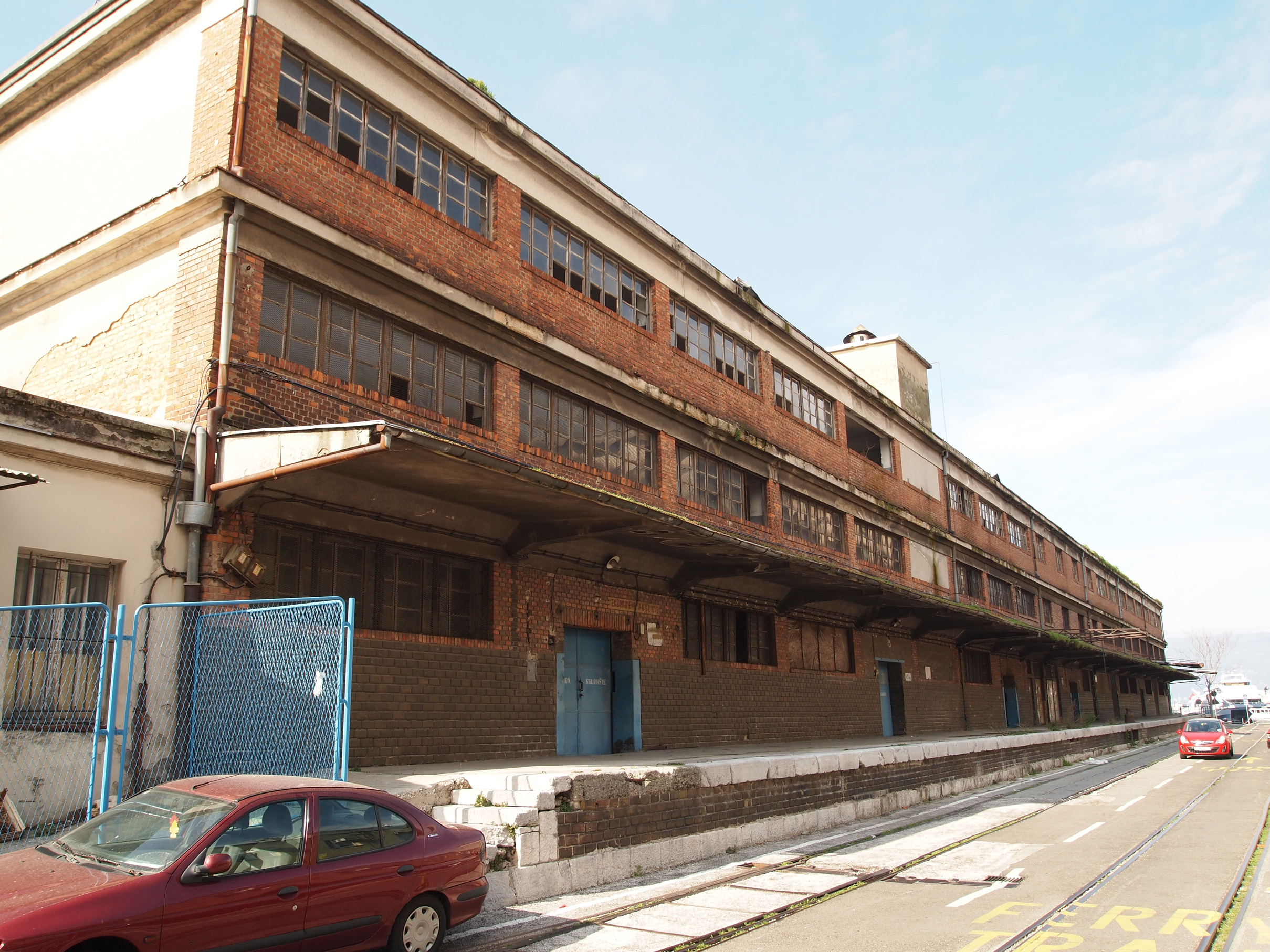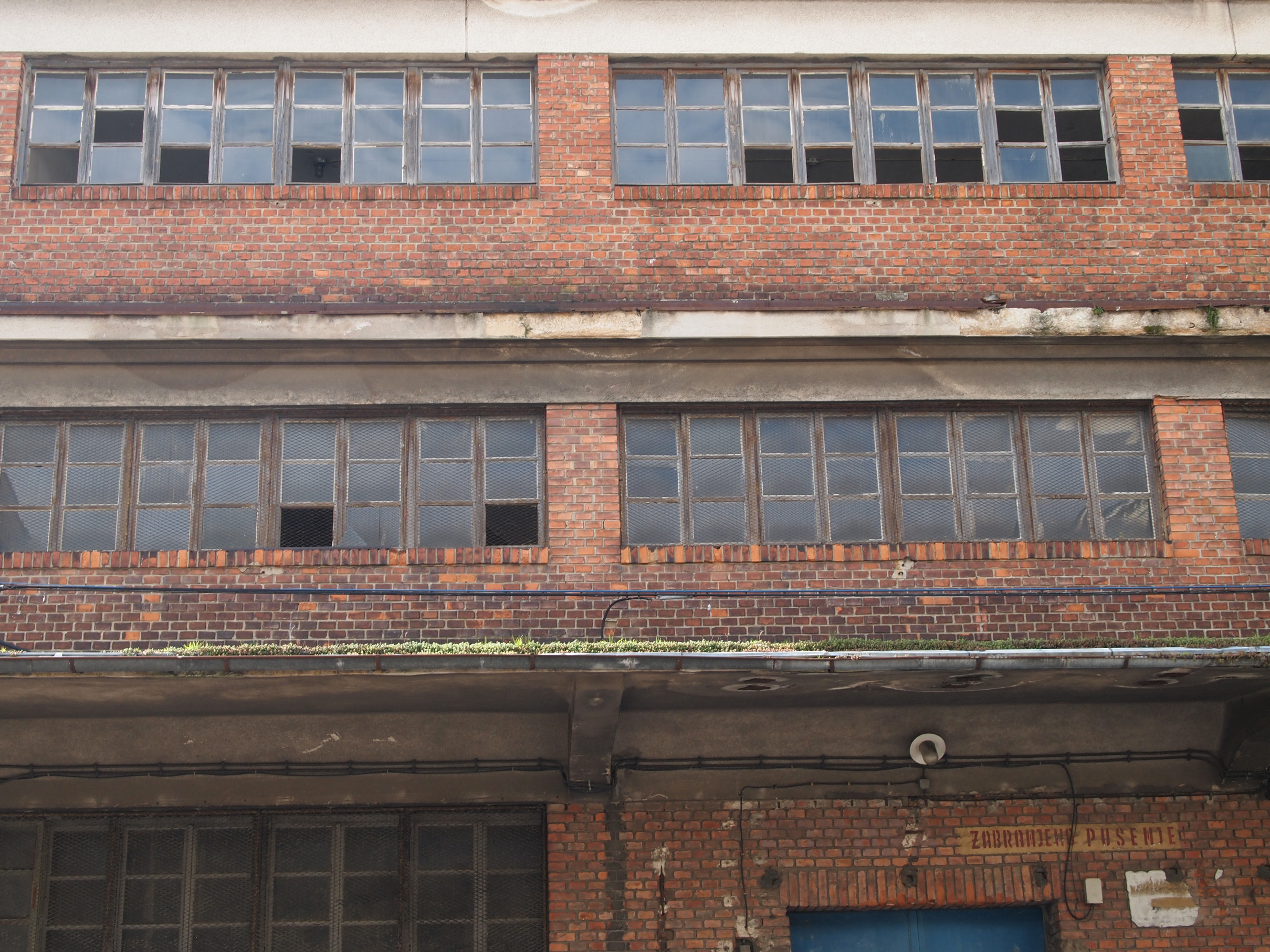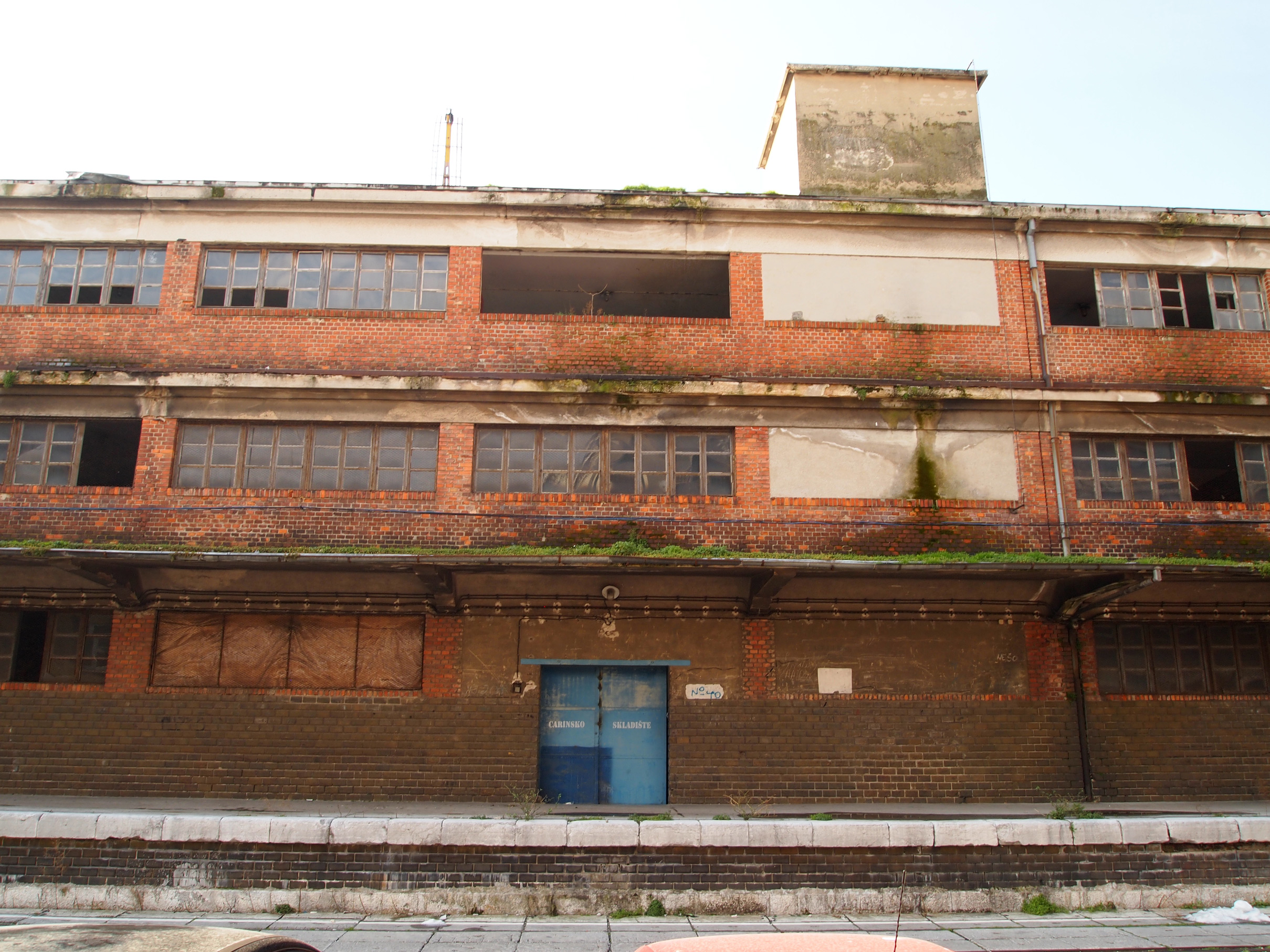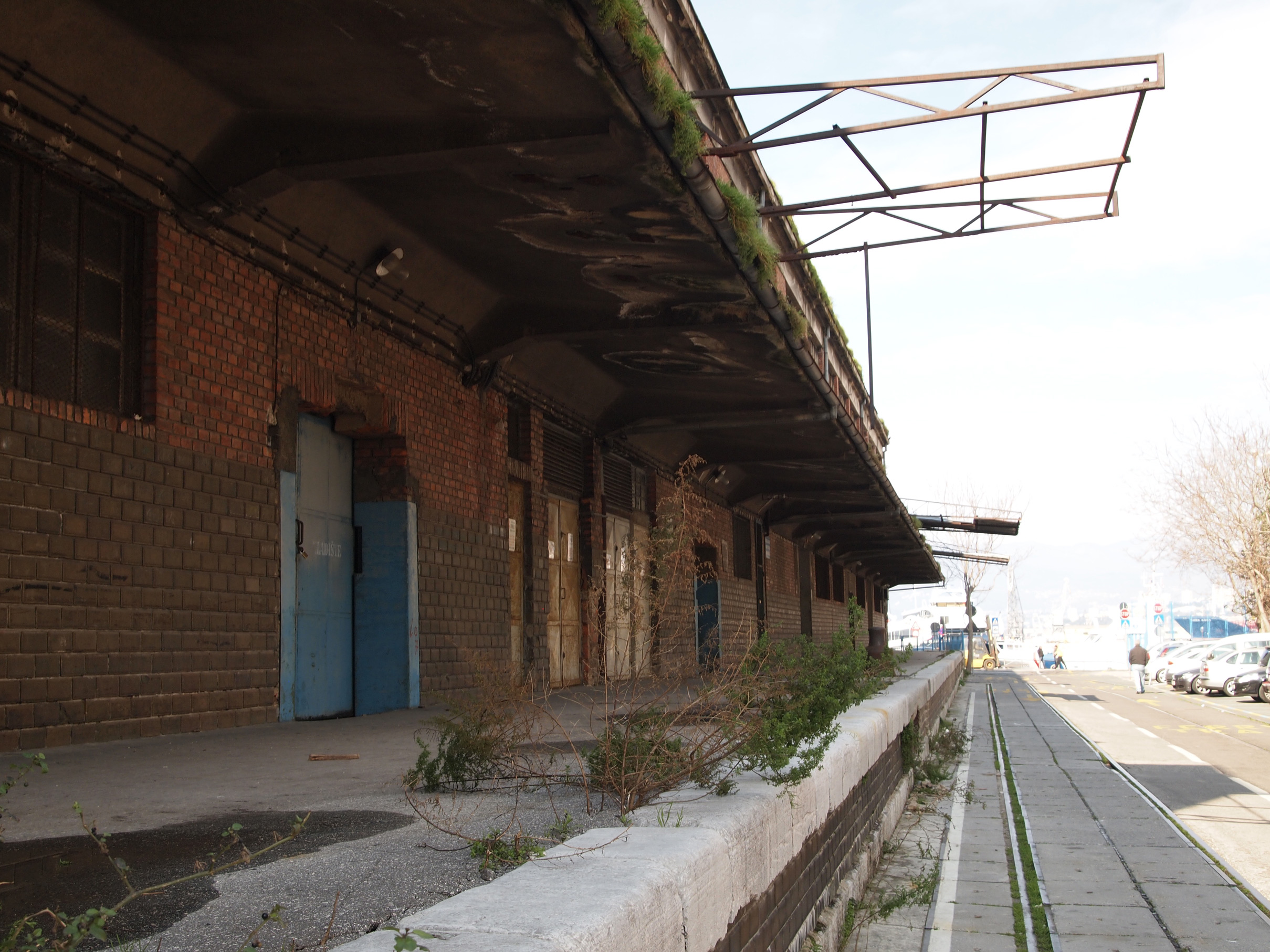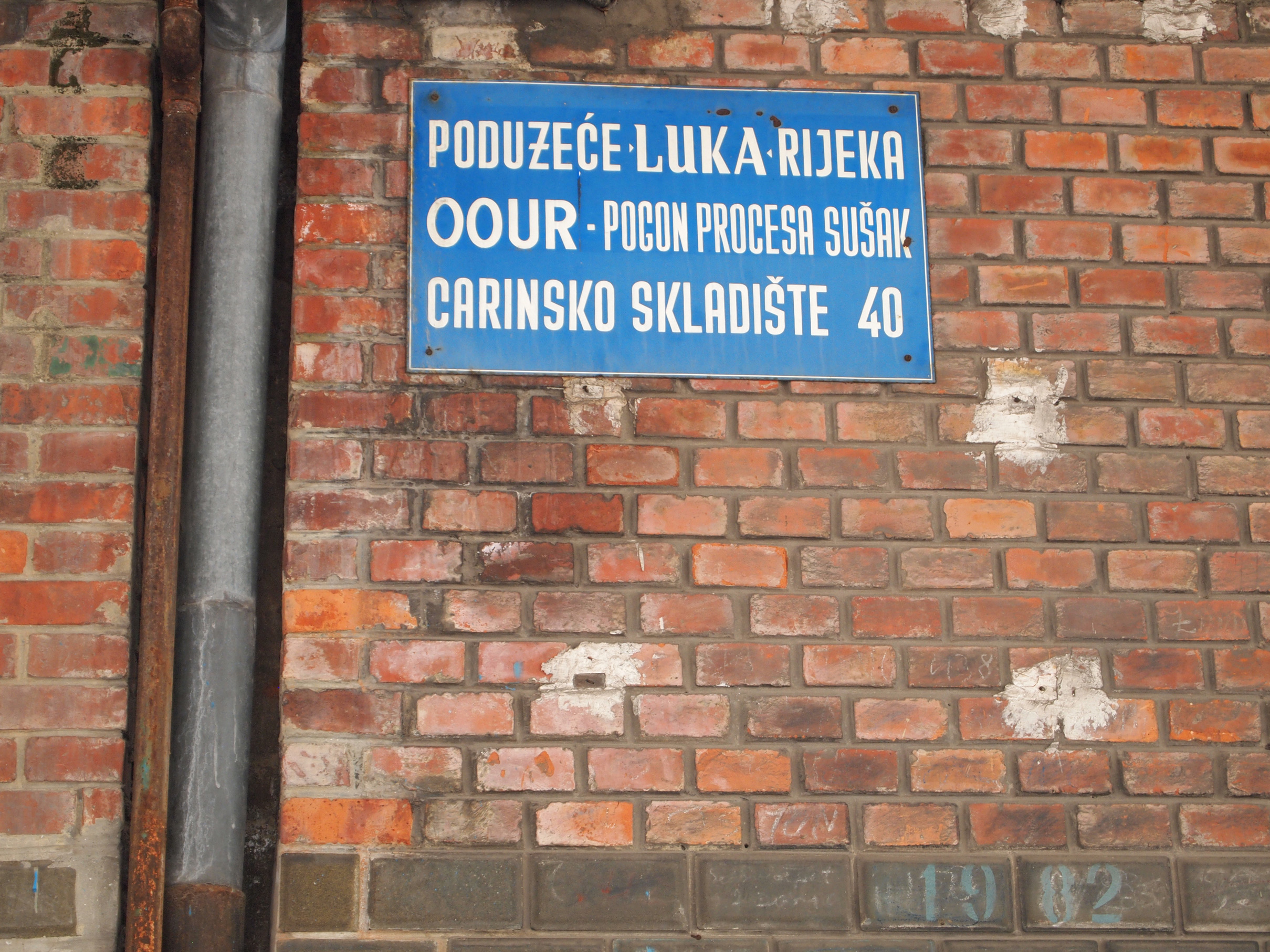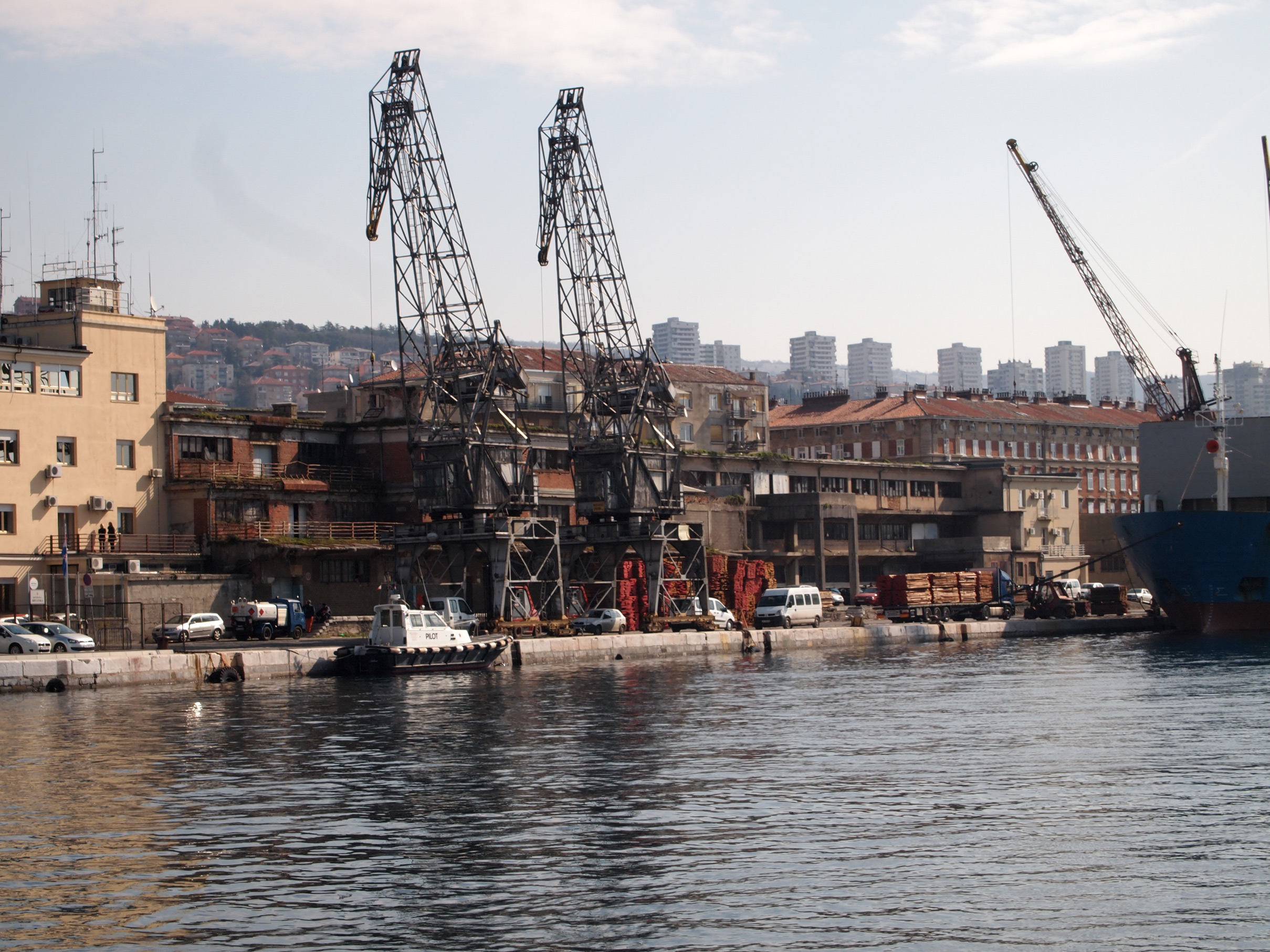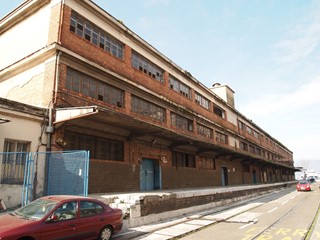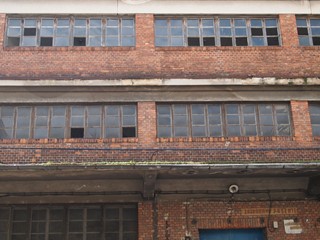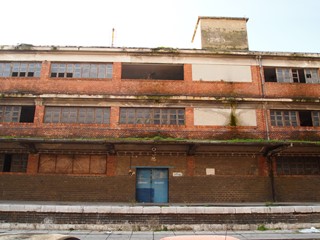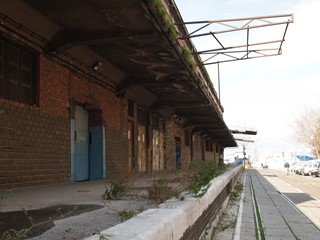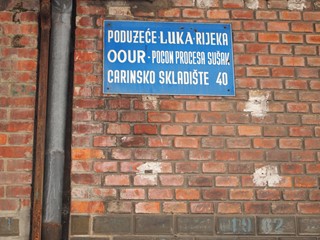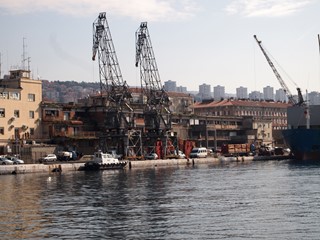Free Customs Warehouses, the Customs House and the Harbour Master’s Office
address: Porto BarossPeriod: Modernism
Kind: Immovable material heritage
Century: 20
Year: 1931
Purpose: free customs warehouses, the customs house and the harbour master’s office
After the demolition of the deteriorated historicist warehouses in port Baross, a new complex of Free Customs Warehouses, the Customs House and the Harbour Master’s Office building were constructed. Engineer Milan Čalogović was chosen as project designer. He was a pioneer when it comes to the use of reinforced concrete structures in the region. Archival sources show that Čalogović designed the project in 1931, and that construction began shortly after that. This complex was to secure an independent economic boom of the port of Sušak after the town’s separation from Rijeka. Thereby Sušak’s basin got its own port authority, customs house and warehouses. The constructed buildings are an early example of the application of the functionalist-style architecture in Sušak, and Čalogović achieved that by stringing balconies on the upper floors and by setting up an elevated ramp for receiving cargo. The second floor was built in 1938 and 1939, and the entire structure was made of a combination of reinforced concrete and load-bearing brick walls with specific mushroom-like columns. These columns enabled the transition towards the ceiling without the use of beams, and this was the first structure of the kind in Rijeka. The representative central hall of the customs house covered by a partially glazed dome stands out in the interior. The exterior is made of a combination of brick and white plaster. Additional dynamics of the building was achieved on the southern end where the central part was set off against the lateral parts of the complex by reducing and gradually retracting it. Although the building has a ground floor and two additional floors, it gives the impression of being low and elongated. The longitude was achieved by placing long balconies on the central indented part of the façade and a wreath as a decorative detail between the two floors of the southern front. Although some decorative and structural elements specific to Historicism and Art Nouveau were used, the building is marked by a dominant influence of Modernism.
Čalogović’s complex was damaged by bombs during the Second World War. The eastern part of the warehouse and the southern part of the customs house were also destroyed. Today, this area is in a state of disrepair and in need of thorough restoration.
Valorization:The complex is classified in the first category of cultural heritage.
Bibliography:
Almanah grada Sušaka, Turistička biblioteka Jadran, Sušak, 1938.
Krizmanić, Damir; Labus, Nenad; Turato, Lada; Zrnčić, Anamarija, Konzervatorski elaborat za područje Delte i luke Porto Baross, Konzervatorski odjel u Rijeci, Rijeka, 2011.
Lozzi Barković, Julija, Građevine povijesno-prometnog značenja u Sušaku – važnome prometnom raskrižju u razdoblju između dvaju ratova, III. međunarodna konferencija o industrijskoj baštini, Pro Torpedo, Rijeka, 2007.
Palinić, Nana, Izvješće o arhivskom istraživanju skladišta br. 40 i 41 na Senjskom pristaništu u Riječkoj luci, Konzervatorski elaborat br. A4 4794, Konzervatorski odjel u Rijeci, Rijeka, 2003.
Palinić, Nana, Rane armiranobetonske konstrukcije u riječkoj luci, Građevinar, br. 5, Zagreb, 2009.

